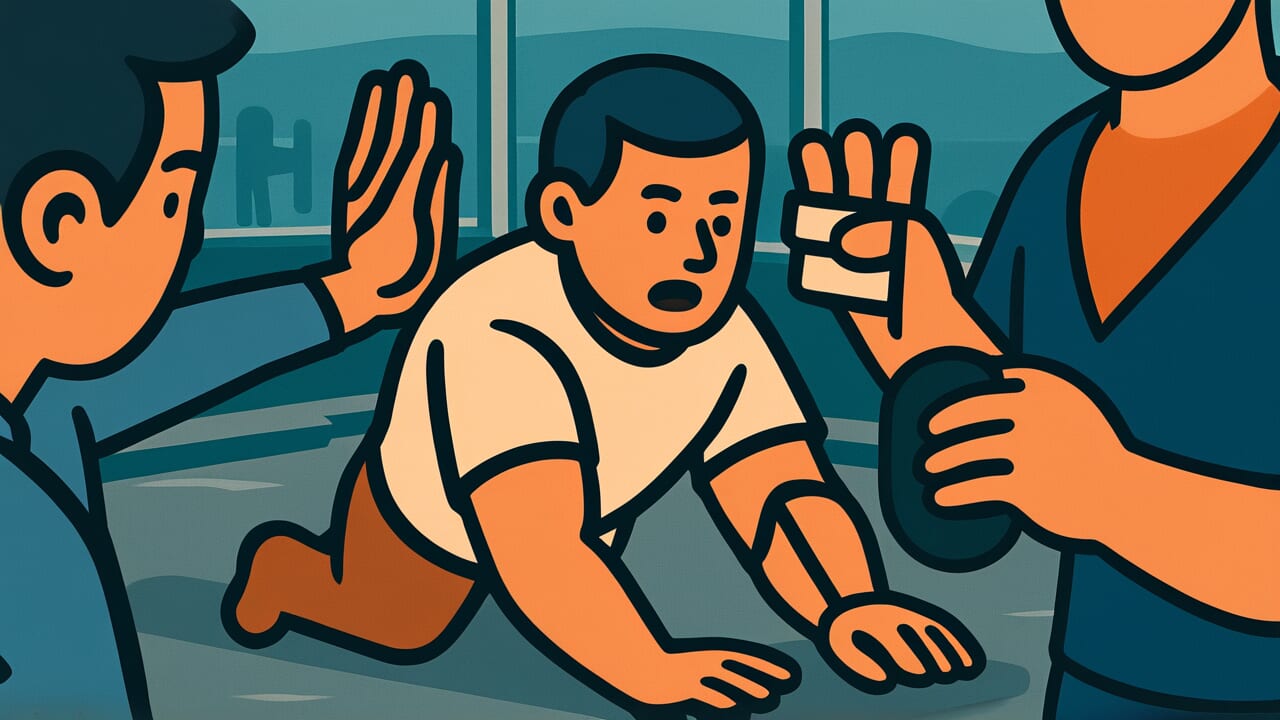How to Read “Dangerous things are part of getting hurt”
Abunai koto wa kega no uchi
Meaning of “Dangerous things are part of getting hurt”
“Dangerous things are part of getting hurt” teaches that approaching danger itself is already as serious as being injured. It warns us to stay away from risky situations from the start.
This proverb is used to warn people who underestimate danger. It rejects the idea that “nothing has happened yet, so it’s fine.” Instead, it emphasizes the importance of avoiding danger altogether.
Rather than regretting an injury after it happens, this saying promotes prevention by staying away from danger. The philosophy of prevention lies at its core.
Even today, this idea applies to basic risk management. Don’t go to dangerous places. Don’t do risky things. Don’t accept suspicious invitations.
The proverb encourages careful judgment in these situations. It warns against the optimistic thinking that “I’ll be fine if I’m lucky.” Instead, it recommends safety-first behavior as practical wisdom.
Origin and Etymology
There doesn’t seem to be a clear record of when this proverb first appeared in written texts. However, we can make interesting observations from the structure of the phrase.
Let’s focus on the expression “kega no uchi” (part of getting hurt). Here, “uchi” means “inside” or “within the range.” This shows the idea that “dangerous things are already within the same category as being injured.”
Consider life during the Edo period. Medical care was undeveloped, and even minor injuries could be life-threatening. Infections from wounds could easily lead to death.
In that historical context, people recognized that “approaching danger itself is as serious as being injured.” This awareness shaped their daily behavior and thinking.
In the world of craftsmen, such words may have been used as warnings against becoming too comfortable with dangerous work. The wisdom of ancestors taught that thinking “I haven’t been hurt yet, so I’m fine” was the most dangerous attitude of all.
This proverb embodies practical teaching about the importance of prevention.
Usage Examples
- That construction site has broken fences. Dangerous things are part of getting hurt, so you’d better not go near it.
- That investment offer sounds too suspicious. Dangerous things are part of getting hurt, so let’s not get involved.
Universal Wisdom
“Dangerous things are part of getting hurt” contains deep insight into human crisis management. Why was such teaching necessary? Because humans have a tendency to mistake “nothing has happened yet” for safety.
We focus on visible results. When we get injured, we feel pain and recognize danger. But when we’re merely approaching danger, we don’t feel any pain yet.
That’s why people let their guard down. Humans easily fall into optimistic thinking: “I’ve been fine so far, so I’ll probably be fine from now on.”
This proverb sees through this psychological weakness in humans. By treating danger and injury as equivalent, it teaches us to stay alert even before anything happens.
Changing behavior before seeing results requires rational judgment. This is not easy for most people.
Our ancestors learned from experience. They witnessed many people thinking “it’ll be fine” and approaching danger, only to face irreversible consequences.
That’s why this teaching has been passed down through generations. It conveys the universal truth that prevention is the best countermeasure.
When AI Hears This
Humans have a curious psychological mechanism. According to risk homeostasis theory proposed by Canadian psychologist Wilde, people try to maintain a constant “total amount of acceptable risk.”
In other words, when safety devices increase, people unconsciously take more dangerous actions to compensate.
For example, drivers with ABS (Anti-lock Braking System) tend to drive faster or follow more closely than before. Skiers wearing helmets ski more boldly than when not wearing them.
Statistics show that improved safety equipment doesn’t always lead to lower accident rates. Many cases have been reported where this pattern holds true.
This proverb suggests the opposite pattern. By experiencing small dangers, people learn their limits and the true nature of danger through their bodies.
This has an effect similar to vaccination. Just as touching weak pathogens helps us acquire immunity, encountering small controlled risks helps develop genuine risk awareness.
People raised in completely safe environments may develop distorted standards for risk. Making dangerous experiences zero might actually create the most dangerous state of all.
Lessons for Today
This proverb teaches modern people the importance of preventive thinking. Don’t deal with problems after they occur. Avoid them before they happen.
This wisdom applies to every aspect of life.
Modern society contains many invisible dangers. Sharing personal information on social media, suspicious investment offers, unhealthy lifestyle habits, seeds of relationship troubles.
These dangers creep closer while we think “it’s still fine.”
What matters is the courage to stop when you sense danger signals. Trust your instincts even when others say “it’s fine.” Don’t give in to feelings like “what a waste” or “people will think I’m cowardly.”
Your life happens only once. Choosing to distance yourself from danger before making irreversible mistakes is not cowardice. It’s wise judgment.
This proverb is a gentle warning from our ancestors to protect yourself. By choosing the safe path, you can spend your time and energy on what truly matters.



Comments